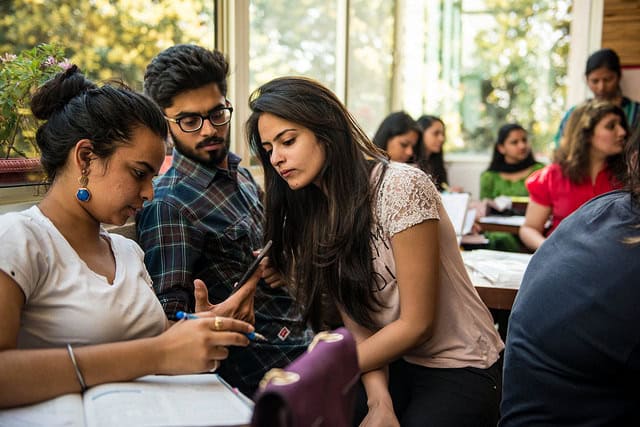ChristianChan/Shutterstock
Recently, I published a book called “How to Mentor Anyone in Academia,” which draws parallels between academic mentorship and leadership. Many academics who feel confident about mentoring may feel far less so when stepping into their first leadership position. But one thing mentorship and leadership have in common: they both involve helping others learn and grow. If you’ve figured out how to help people learn and grow in one professional role (academic mentor), you’ve already laid the groundwork for being an effective academic leader.
As a new leader, you may find no shortage of things to intimidate you. Since academics gain little prior direct experience or training for leadership roles such as center director, department chair, or associate dean, the first few months in one of these roles can feel like a dizzying scramble up a steep learning curve. On top of the inherent difficulty of learning new things, you may also find yourself having to wrestle with a new professional identity as a leader. “Leader” may not have featured in your academic vocabulary for most of your career, but here you are now, having to be one. You may have been provided access to formal leadership training opportunities to ease the transition, which might also include some leadership coaching. Or perhaps you’re simply reading every leadership guide you can get your hands on.
As a former higher ed faculty member who transitioned to administration and then to academic leadership coaching, I’ve occupied this uncomfortable place and now work with people who find themselves there. I’ve been able to see what’s truly helpful for new academic leaders, as opposed to things that appear helpful but may, in fact, effectively block people’s innate leadership potential. The sprawling leadership development industry — worth well over 100 billion dollars annually in the United States — can offer academics things that fall into both categories. How can you sort what’s “hypeful” from what’s truly helpful at this stage of your leadership development?
This is by no means a screed against leadership training, and it’s not to absolve institutions of the important work of intentionally developing faculty leaders. Most academic leaders I’ve encountered have voiced gratitude for formal academic training opportunities and speak highly of those experiences. At the same time, it can be tempting for an emerging leader to unquestionably embrace the latest leadership training program, diagnostic test, or framework as the “must have” thing that will catapult them to the top of what coaches call the competence ladder.
It’s good to have access to lots of external resources. At the same time, if we focus too much on trainings, frameworks, and tools, we may come away with the false idea that leadership is a foreign activity that needs to be uncoded for us by researchers and paid consultants. We may come to see leadership as a thing or quality that needs to be acquired and overlook myriad ways we are already natural leaders — across multiple domains of our lives. And in the quest for the next formal leadership development experience, we may be eschewing things that are simple and hugely impactful in favor of the “cool” thing that’s complicated and only marginally helpful.
How do people develop as leaders? What practices or interventions are truly transformative?
Learn by doing.
According to the Center for Creative Leadership’s 70: 20:10 Framework, leaders learn and grow from three types of experiences: Challenging experiences and assignments (70%), developmental relationships (20%), and coursework and training (10%). Yes, jumping into a new role may feel strange and disorienting at first, but there may be no magic cure or palliative for growth pains you’ll experience as you learn the ropes.
Don’t assume that leadership training will be transformative.
That’s right, only 10 percent of learning and growth is associated with formal training, at least according to CCL’s research. Other research on training programs in government and industry suggest an 11% improvement over three months, but the benefits appear to deteriorate quickly after a “honeymoon period” (Boyatzis, 2024). If you want to see sustained change in your leadership practices, “one-off” trainings likely won’t get you there.
Pay attention to developmental relationships.
What helps people sustain learning and growth? One powerful ingredient is what researcher Richard Boyatzis terms “resonant relationships,” those characterized by shared vision, compassion, and energy (2024, p. 18). People learn and grow in the company of others, whether they are mentors or peers. For this reason, the best leadership programs — the ones that faculty tell me are useful — are ones that help them develop a strong network of peer and senior mentors to support their way forward.
Consider adding a coach to your network.
Piling on leadership experiences won’t necessarily lead you to learning and growth unless you can slow down and reflect on those experiences. In other words, you need to spend time with yourself, continually asking: “What happened?” “What went well?” “What will I do better next time?” “What did I just learn?” Because many of us don’t make time for reflection in our hectic schedules, it can be beneficial for leaders to work with a trained and certified coach who can serve as a confidential thought partner and facilitator of your learning process.
Don’t overlook your most important resource.
Finally, don’t forget your cumulative history of professional and personal experiences, talents, and strengths that make you the right person for the role you’re in now — even if it may not always feel that way. In other words, the person best positioned to show you how to lead is YOU. Sometimes, academics who are new to leadership focus way too much on the things they don’t know — without stopping to consider the all the informal leadership skills they’ve honed from being teachers, heads of research teams, parents, and community volunteers. If you feel strong, capable, and confident in one area of your life, how can you apply those lessons to the less familiar space of formal academic leadership? Only you can answer this question, and nobody can lead in exactly the same way you will.




























